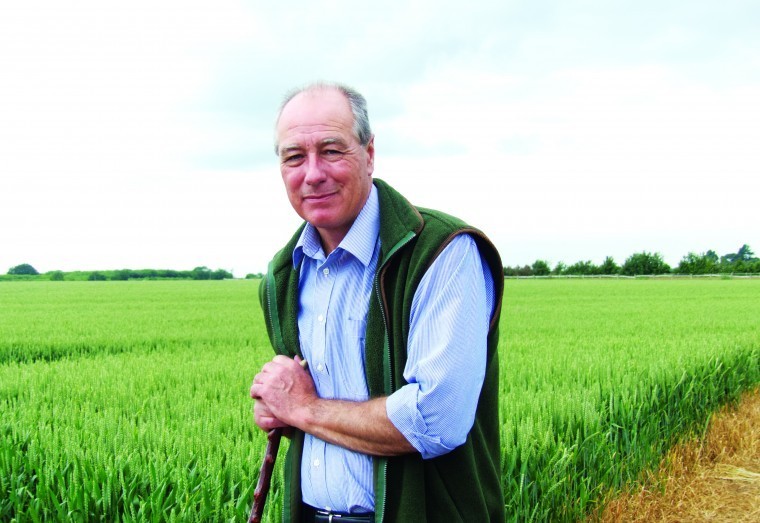As mentioned last month the oilseed rape harvest started disappointingly and continued in the same vein with large variability in yields but around a fairly poor average figure which will be 2.87 tonnes a hectare. It has been a long while since we have seen those sort of yields. Clearly the weather throughout the spring, flowering and ripening has all had an effect and I referred to it on a monthly basis in earlier articles.
Looking back, the key issues were the very late spring growth, pigeons, truncated flowering, frost during flowering in the first half of May, rain post flowering, disease and lack of sunshine. A long list of negative factors most beyond our control but management could affect some of those problems.
At one stage I thought disease was the key factor and there were very clear visual differences between varieties. As an example Charger showed more disease than Campus and we certainly cut crops of both that reflected the level of disease in the final yield but where we had both in the same field, with Campus looking cleaner than Charger the yields were the same.
I have reflected on nutrition as the oilseed rape was very slow growing away in the spring but where we used bio solids and had stronger, better crops, sometimes the yields were better than average but on other fields just average or worse. Where crops grew strongly pre winter and did grow away earlier in the spring they seem to have caught the worst of the frost which masked the beneficial effects of better growth.
My only real conclusion is that where we were using ammonium sulphate based fertiliser in February dressings to provide sulphur it clearly took longer to work in this year’s weather and that was to the detriment of the crops. So we will be changing the sulphur source and using ammonium nitrate in the form of Axan with its added calcium sulphate for all dressings on oilseed rape and most of the wheat. We will also make varietal decisions based on best genetic disease resistance.
As we have loaded oilseed we have had one load with a high erucic acid level and a hefty claim. Clearly ADM are testing at intake for the first time this year and responding to a problem they have identified so it is information we have not had before. Considering why there was a single load out of 1,000 tonnes with a problem, we can trace it back to an individual field where there was some over wintered charlock from poor chemical control combined with a lot of pigeon damage and hedge mustard. Unfortunately that field was loaded on the single lorry without being blended as would normally happen.
Two things have flowed from that conclusion. Firstly on the Weald clays where charlock is always a problem we will be planting Clearfield varieties so we can kill all the charlock and hedge mustard. Secondly where we are using farm saved seed that is being tested for erucic acid levels to be absolutely sure there is not a problem and we will be keeping samples of all seed lots used until we have loaded all of next year’s harvest.
Turning to wheats, the first thing to say is that they have yielded reasonably well and we have certainly cut crops of first and second wheats that have exceeded 10t/ha and clearly some that have not. The specific weights are the weakness and where last year we had 78 to 82 kilkograms a hectolitre, this year 72 to 75kg/hl is the norm with shrivelled grains obvious to the eye. The lack of sun during grain fill coupled with ear disease is the obvious cause. I think we all expected that outcome as the similar weather and outcome in 2012 is fresh in the memory. There is nothing to add.
We have started into some spring barley and while not over a weighbridge the yields are encouraging. Beans both winter and spring are a way off yet. The plus is that harvest so far has been largely dry with little drying costs and markets have lifted driven by poor weather in France and Germany as well as a weak pound. Unfortunately the latter will feed through to higher costs at some point. Also on a positive note we have confirmation from the Treasury regarding support payments through to 2020 which gives certainty and time to evolve a British agricultural policy. It is also encouraging that the prime minister and chancellor are taking the significant decisions in a timely fashion.
As many of you know I still drive a combine throughout harvest and enjoy it immensely. You can see most of the successes and failures for the year long effort from a combine seat. You also see how wildlife has fared. Clearly the wet spring led to a number of late broods of pheasants and grey partridge from second clutches. I have never seen grey partridge broods so late and they are only just flying as we are cutting wheat fields.
That has made them vulnerable to predation and I watched a family group of five buzzards hunting partridge chicks as well as leverets with quite remarkable success from the buzzards’ viewpoint. I have also noticed how many pairs of English partridge there are with no broods. That has to be from nest predation. We do a good job on magpies and crows but like most of the country we have ever increasing numbers of badgers and they are big ground nest predators. I am afraid things need to be in balance and too many of any one species always impacts on the rest of their food chain.




